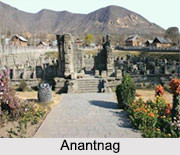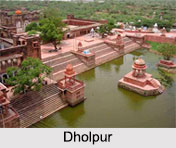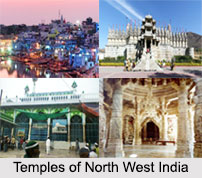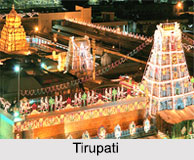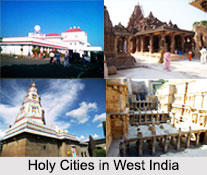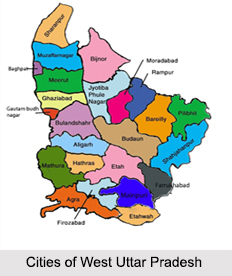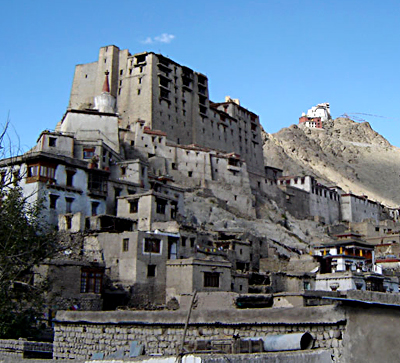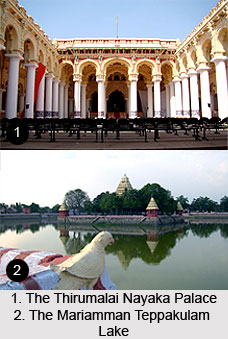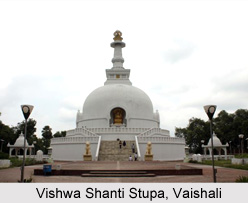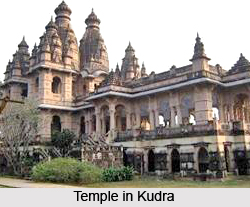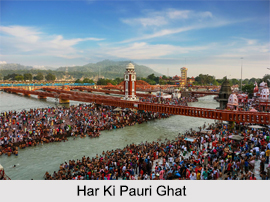Introduction
Agriculture of Ladakh has enabled the land to bear a self-sufficient agrarian economy. Located at the western end of the Tibetan Plateau and tucked north of the Himalaya between Tibet and Kashmir, the agriculture of Ladakh is inseparable from the social and bouldery structure of the villages. The climate of Ladakh is basically harsh because of the long living winter that is devoid of rainfall. As a result, the land of Ladakh is treeless and seemingly barren, with crazily canted rocky slopes. The fields in Ladakh territory are mostly terraced, built with elegant stone walls, and most skillfully arranged.
Horticulture and Farming in Ladakh
Ladakh’s agriculture remains largely subsistence-based, yet it stands out as a distinctive reflection of the Tibetan plateau’s farming system. Traditionally, Ladakhis were entirely self-reliant, cultivating their own grains, cereals, and vegetables, producing manure and seeds, rearing livestock, and managing farms in a balanced, integrated manner suited to the region’s harsh agro-climatic conditions.
In recent years, however, limited cropping intensity, low productivity, and a short growing season have made the region increasingly dependent on imported food grains, vegetables, and spices to sustain its expanding population.
Despite these challenges, Ladakh possesses immense potential with its niche agricultural and horticultural crops. By focusing on value addition and efficient marketing strategies, the region could witness a localized green revolution. Emphasizing winter vegetable cultivation through cost-effective technologies, particularly to meet local demand during the long winter months, could offer significant benefits and new opportunities for Ladakhi farmers.
In Ladakh, the predominant farming systems include agri-horticultural and agri-pastoral practices. While monocropping remains common across most areas, certain regions such as the Sham belt and Nubra Valley have adopted double cropping to enhance productivity. Wheat and barley continue to be the principal crops cultivated in the district.
Advancements in agricultural technology have gradually transformed the region’s farming landscape, extending the vegetable-growing season and enabling the cultivation of a wider variety of crops that were previously unsuited to Ladakh’s harsh climate. However, much of the farming community in Leh remains uneducated and continues to rely on traditional agricultural methods passed down through generations.
To bridge this gap, institutions such as KVK-Leh,
KVK-Kargil, and KVK-Nyoma, along with research bodies like HMAARI SKUAST-K,
DIHAR, CAZRI, and various state departments, are working actively to educate
farmers on scientific cultivation techniques. Through a range of training and
awareness programs, these organizations are striving to transfer modern
agricultural knowledge and technologies from the laboratory to the field,
empowering Ladakhi farmers to adopt more sustainable and productive practices.
Irrigation in Ladakh
The fields that are prepared for agriculture are mostly miniature lands and are not suitable for broad scale agriculture. The agriculture of Ladakh is predominantly dependent on irrigation. Sometimes, channels are prepared to get water for agriculture. At the fields, little soil dams in the drains are created or breached using long handled spades to distribute the water in a gentle and even flow. The water for agriculture of Ladakh comes from the Indus, which runs low in March and April when barley-fields have the greatest need for irrigation. Igu-Phey Medium Irrigation Project in Ladakh. The Igu-Phey Division is responsible for irrigating approximately 4,534 hectares of land on the left bank of the Indus River and is also in charge of Leh's sewerage system and the sewage treatment plant.
Apart from these projects, some smaller projects were taken
for the development of water resources. Even irrigation potential has been
created over an area of nearly 5000 hectares, through the construction of
canals and water-harvesting tanks. Some of the non-official agencies had also
undertaken integrated development schemes in limited areas, involving the
application of modern appropriate technologies including hydraulic ram pumps
and solar pumps.
Cultivation in Ladakh
The staple crop of Ladakh is barley and in some areas, wheat,
peas, vegetables and mustard
for oil are also cultivated. Crops are
grown in summer and the gleaming green view of the fields sets a perceivable
contrast to the bare stony area. Roasted barley meal (ngamphe) is the main diet
and barley is acidified to produce the alcoholic ‘chang’ that is a must for all
celebrations. Centuries of plant breeding have produced superbly adapted local
varieties. The emphasis in Igu-Phey is being laid for the cultivation of fodder
crops, principally the indigenous ol (lucerne), which takes most of its water
in June, when Indus water is plentiful. The Igu-Phey canal doubles up as the
water-supply for the three-megawatt Igu-Martselang hydroelectric project.
Although, at present, agriculture in Ladakh is excelling, official policy has confirmed to improve it by the use of chemical fertilizers and the introduction of high-yielding varieties of crops. Presently, in Leh the total cropped area is about 17,000 hectares. The area under high-yielding varieties (HYV) i.e. hybrid varieties introduced from outside. Most of the lands are accounted for by wheat, and the balance by grim and vegetables. In Kargil too, the success of the HYV programme has been mainly in wheat.
There are several varieties of barley already available in
the two regions of Ladakh, their characteristics varying subtly according to
micro-local conditions. Some of the organizations have been providing
information and awareness-raising programmes for farmers, laying emphasis on
the problems associated with high-tech agriculture as well as the excellence of
the existing methods, and suggesting only those improvements that seem to be
compatible with traditional systems.
Plantation in Ladakh
Though the scope for forestry is limited, plantation has been done along roads and river-banks and wherever the administration owns a patch of irrigated land. These lands had been confined to the traditionally grown trees, poplar and willow. The apricot programme is another example of development building. Besides apricots, other fruits and some nuts are also grown in this region. Dried apricots are Ladakh’s only cash crop and since the 1970s, the district administrations have devoted a lot of attention to the fruit, experimenting with new strains and new methods of grafting, as well as with improved methods of drying it. The area under apricot orchards is also being expanded, especially in the Kargil region. The willy nilly scattered and meager wild plants are used for fuel, fibre and labour. As agriculture is inseparable from livestock rearing, the administration had concentrated on improving the local breeds of livestock, apart from increasing fodder production.
Farming Methods in Ladakh
Protected cultivation has opened new avenues for Ladakhi farmers, enabling them to grow a wide range of vegetables during the summer months and a selected few even through the harsh winters. Adopting scientific cultivation methods is crucial for achieving healthy and productive harvests. The incorporation of ample farmyard manure plays a key role in enhancing soil fertility and improving its water-holding capacity, ensuring long-term agricultural sustainability in the region.
Organic Farming
Organic farming, though rooted in ancient agricultural
traditions, has evolved into a modern, environmentally conscious movement that
emphasizes harmony with nature. It promotes the cultivation of crops using
organic manures and eco-friendly pest management practices, completely avoiding
synthetic chemicals. Today, over 174 countries practice organic farming, driven
by both ecological and economic motivations. In Ladakh, Takmachik village
serves as a prime example of this sustainable approach, having fully embraced
organic farming. With its favorable conditions and community interest, Ladakh
has immense potential to transition toward 100% organic agriculture, though
such a transformation must occur gradually and in carefully planned phases.
Technological Development in Agriculture
Recent technological advancements are steadily transforming
Ladakh’s agricultural landscape. The establishment of the first
spawn-cum-pathology laboratory at KVK-Leh marked a significant milestone in
promoting mushroom cultivation. Additionally, the creation of soil testing
laboratories and the adoption of integrated pest management (IPM) techniques
have improved crop health and productivity. The introduction of bio-pesticides
such as Trichoderma, neem oil, pheromone traps, light traps, and yellow sticky
traps has further strengthened eco-friendly pest control efforts.
To support farmers and uplift the tribal population
socio-economically, institutions such as SKUAST-K Kargil, KVK-Leh, KVK-Nyoma,
HMAARI SKUAST-K, and CAZRI RRS-Leh are providing essential resources under the
Tribal Sub-Plan. These include high-quality planting materials, seeds, cattle
feed, vermicompost, apricot harvesting nets, mulching sheets, trench sheets,
and other inputs designed to enhance agricultural productivity and
sustainability across Ladakh.
Development of Soil for Agriculture
Chief indicators of soil quality include pH level, concentration of soluble salts, organic matter content, soil aggregation, and the availability of essential nutrients. To maintain and enhance soil health, it is crucial for farmers to incorporate sufficient quantities of organic manure before preparing the land for cultivation.
In Ladakh’s unique climatic and geographical conditions, soil degradation commonly occurs through wind and water erosion, as well as chemical deterioration such as salinization. To combat these issues, farmers are encouraged to plant erosion-resistant and nitrogen-fixing legumes like French beans, peas, and alfalfa, which help stabilize the soil and improve its fertility. The regular application of organic manures further supports this process by enriching soil structure and nutrient content. In areas affected by severe salinity, excess salts can be leached out through controlled flooding, while the application of gypsum serves as an effective soil amendment to restore balance and promote healthy crop growth.
Evolution of Agriculture in Ladakh
Traditionally, large share of the total cropped area was under barley and wheat. Households have increased vegetable production for domestic use as well as cash crop mainly to meet demand of army and tourism industry. Introduction of public distribution system in the region resulted in increase in dependency and decline of cultivation of traditional crops like wheat and barley.
Furthermore, Ladakh’s harsh environment, marked by a thin atmosphere, intense ultraviolet radiation, and scarce water resources, poses significant challenges to traditional farming. Nearly half of all households own less than 0.5 hectares of land, and open-field cultivation is feasible for only a few months each year. To overcome these constraints, various forms of protected cultivation such as passive solar greenhouses, trench greenhouses, and low tunnels, have been developed and customized to suit the region’s unique conditions.
These protective structures create controlled micro-environments that capture solar radiation and retain heat, enabling year-round or extended-season crop production. This not only boosts yields but also strengthens Ladakh’s food and nutritional security.
The Defence Institute of High-Altitude Research (DIHAR), formerly known as the Field Research Laboratory (FRL), pioneered greenhouse agriculture in Ladakh. The institute began experiments in 1964, achieving successful cultivation of vegetables such as kale, parsley, celery, spinach, lettuce, and Swiss chard under controlled conditions.
Early greenhouse models in Ladakh were simple structures built with three thick mud-brick walls and a south-facing polythene sheet, which required replacement every one to two years. DIHAR later upgraded these designs by using triple-layered polycarbonate sheets for improved durability and transparency, while replacing mud-brick walls with heat-absorbing stone. Additionally, recessing the structure about three feet below ground level helped enhance insulation, raising internal temperatures by 7–8°C above the outside air.
Modern Ladakhi greenhouses now make it possible to cultivate a variety of vegetables throughout the year. During winter, farmers grow spinach, Swiss chard, cabbage, lettuce, Siberian kale, coriander, and fenugreek. In summer, the same structures are used for tomatoes, brinjals, and cucurbits. These greenhouses also function as off-season nurseries for fruit and vegetable crops—including apple, apricot, pear, and various vegetables—allowing seedlings to be started one to one and a half months earlier than in open-field conditions.
Government Initiative to Promote Agriculture
The Agriculture Department of the Union Territory of Ladakh envisions transforming the region’s agricultural sector into a sustainable, profitable, and respected livelihood by harmonizing traditional wisdom with modern innovations. This transformation is guided by a deep respect for Ladakh’s scarce natural resources and a commitment to preserving its fragile ecosystem. The department’s vision is “Sustainable Agriculture for enough food, employment, and wealth.”
The Agriculture Department of the Union Territory of Ladakh has outlined a comprehensive set of objectives to advance the region’s agricultural landscape. A key priority is to raise awareness among farmers about the latest agricultural innovations, technologies, and best practices while guiding them through every stage of the cultivation process to support both subsistence and commercial farming. The department is committed to effectively implementing all Centrally Sponsored Schemes related to agriculture and ensuring the timely provision of high-yielding variety (HYV) seeds, hybrids, and superior planting materials to boost productivity.
Promoting soil health remains a central focus, achieved through Integrated Nutrient Management and the use of Soil Health Cards. The department also emphasizes diversification in cropping and farming systems, along with the promotion of organic farming to create a resilient and eco-friendly agricultural model. Special attention is being given to the development of irrigation infrastructure through initiatives such as ‘Per Drop More Crop’ and ‘Har Khet Ko Pani,’ ensuring efficient water use and wider irrigation coverage.
To minimize losses and enhance profitability, the department
promotes effective post-harvest management practices, including Integrated Pest
Management, and supports the development of critical infrastructure like
warehouses, cold chains, reefer vans, and local mandis. Recognizing the
challenges of hill agriculture, it also encourages farm mechanization tailored
to Ladakh’s terrain. In addition, the department fosters ancillary activities
such as mushroom cultivation, forestry, and vermi-composting, alongside
initiatives that focus on value addition, branding, tagging, and the growth of
micro food enterprises. Finally, by promoting the cultivation of off-season
vegetables through protected methods like greenhouses, the department seeks to
ensure year-round agricultural productivity and enhanced income opportunities
for Ladakhi farmers.
